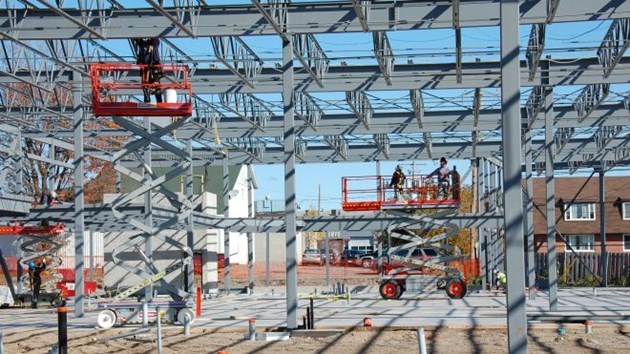Work continues at construction sites across Ontario as the provincial government urges contractors to follow best practices to keep workers safe to prevent the spread of COVID-19.
Ontario’s Chief Prevention Officer provided a guidance document for employers that involves providing heightened on-site sanitation in high-touch areas like site trailers, door handles and hoists, as well as taking other measures such as staggering shifts, restricting numbers on site, and limiting elevator usage.
“With the COVID-19 situation changing day by day, we are working to ensure that workers have the tools they need to help keep job sites safe. We must do everything possible to fight the spread of this disease,” said Labour, Training and Skills Minister Monte McNaughton in a statement.
The construction industry was identified on March 23 as of part of a 74-point list outlining businesses it considers essential.
The province reminds employers that, under Ontario law, they must take every reasonable precaution to keep workers safe. Workers have the right to refuse unsafe work.
Want to read more stories about business in the North? Subscribe to our newsletter.
Ministry inspectors are out inspecting job sites every day.
The province said employers and constructors warn that failure to comply with the Occupational Health and Safety Act and its regulations could result in a stop work order being issued.
In a letter to members, Ontario General Contractors Association president Clive Thurston wants to ensure that job sites remain open.
“There needs to be a well thought out plan put in place on how we can move forward and protect the population and our workers,” he stated.
“Simply shutting down the construction industry will not be sufficient in addressing this pandemic. It needs to go further than that, but the longer we wait, the longer we delay in putting in place the mechanisms, tools and policies needed to protect this vital industry, the greater risk we run of not surviving.”
Thurston said there’s a misunderstanding amongst many trades that the general contractor can shut down a site.
“This is not the case. If a general (contractor) were to, arbitrarily, on its own, shutdown a site, they would be deprived of any protection under their contract in regards to delays and force majeure.”
The financial impact would flow to the trades, he said, and an industry restart would be fraught with difficulty as many companies would likely be out of business or unable to secure workers of supplies.
“We can plan for this; we can put in place policies and laws to protect the industry in the face of a proposed shutdown.”




